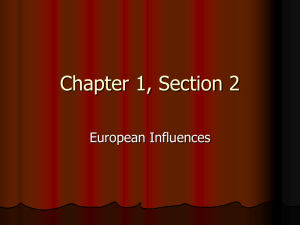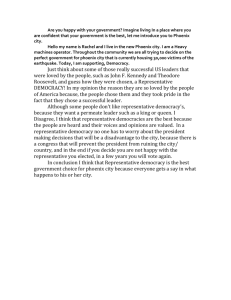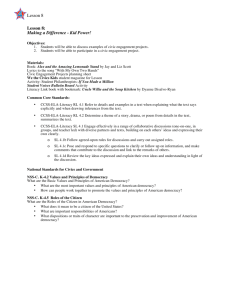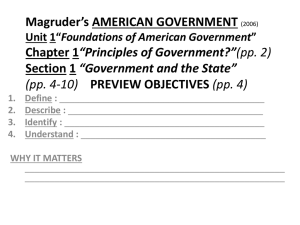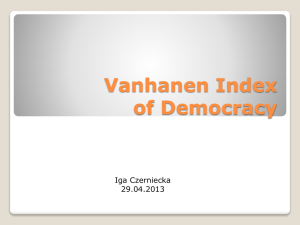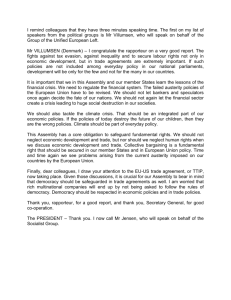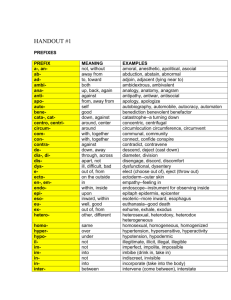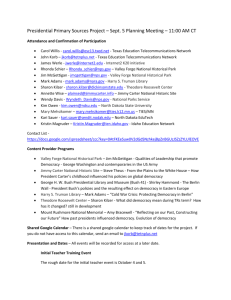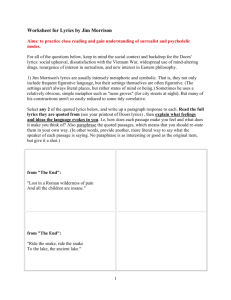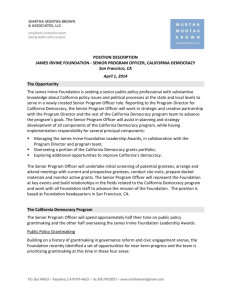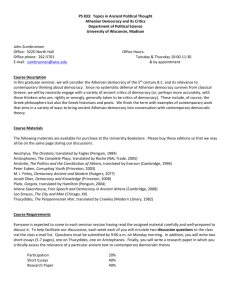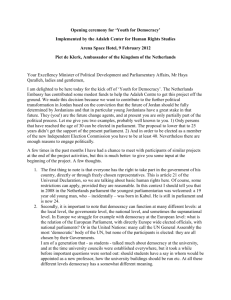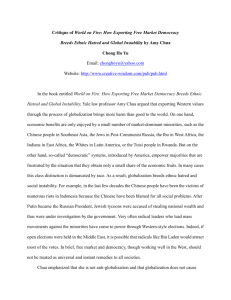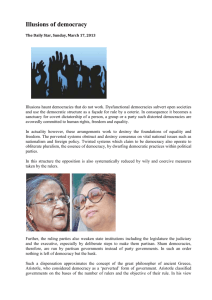HUM 211: First Writing Assignment (Group Portion)
advertisement
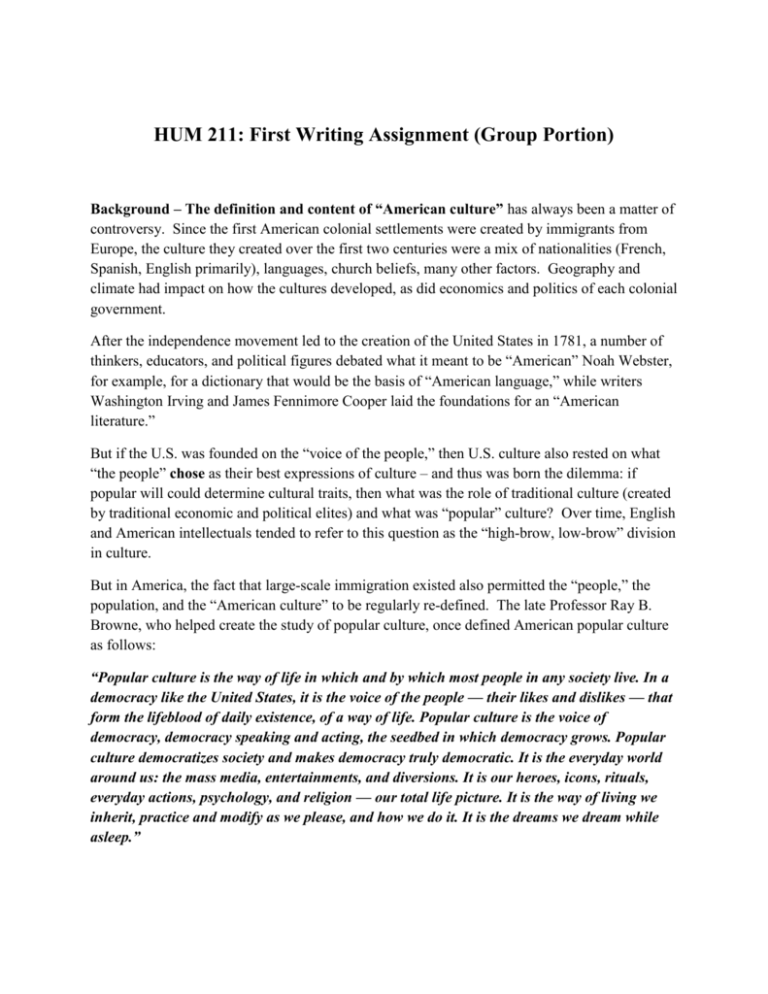
HUM 211: First Writing Assignment (Group Portion) Background – The definition and content of “American culture” has always been a matter of controversy. Since the first American colonial settlements were created by immigrants from Europe, the culture they created over the first two centuries were a mix of nationalities (French, Spanish, English primarily), languages, church beliefs, many other factors. Geography and climate had impact on how the cultures developed, as did economics and politics of each colonial government. After the independence movement led to the creation of the United States in 1781, a number of thinkers, educators, and political figures debated what it meant to be “American” Noah Webster, for example, for a dictionary that would be the basis of “American language,” while writers Washington Irving and James Fennimore Cooper laid the foundations for an “American literature.” But if the U.S. was founded on the “voice of the people,” then U.S. culture also rested on what “the people” chose as their best expressions of culture – and thus was born the dilemma: if popular will could determine cultural traits, then what was the role of traditional culture (created by traditional economic and political elites) and what was “popular” culture? Over time, English and American intellectuals tended to refer to this question as the “high-brow, low-brow” division in culture. But in America, the fact that large-scale immigration existed also permitted the “people,” the population, and the “American culture” to be regularly re-defined. The late Professor Ray B. Browne, who helped create the study of popular culture, once defined American popular culture as follows: “Popular culture is the way of life in which and by which most people in any society live. In a democracy like the United States, it is the voice of the people — their likes and dislikes — that form the lifeblood of daily existence, of a way of life. Popular culture is the voice of democracy, democracy speaking and acting, the seedbed in which democracy grows. Popular culture democratizes society and makes democracy truly democratic. It is the everyday world around us: the mass media, entertainments, and diversions. It is our heroes, icons, rituals, everyday actions, psychology, and religion — our total life picture. It is the way of living we inherit, practice and modify as we please, and how we do it. It is the dreams we dream while asleep.” Assignment – Part 1 (team portion) -With the above background in mind, your writing team is to draft a paper (about 1000 words) that examines three examples of contemporary American culture (art, literature and/or music, perhaps movie or play, created since 1960) that reflects three major components of American culture: Democracy National Growth Individuality (recall the 3 examples in slides of artistic creation from the 1800s) In about 1000 words explain how these three examples reflect the above American examples. As you do this, consider the way each example uses its medium (in style, lyrics, color, etc.) if and how it focuses on a specific audience (by race or gender or other factors) who or what it includes and excludes and why if the example is closely related to a specific event when it was produced, note this and explain how it reflected that event Your analysis will be enhanced by doing some research on the artist (or composer, etc.). If reviews of the examples exist, it is a good idea to use them as well. Use images as needed. Extensive quoting of lyrics or commentary is not a good way to meet the required 1000 words. Use what you need, no more. The Draft of this 1000 word essay will be marked and returned to the teams. Part 2 (individual portion) Each student now works individually works on this part. First revise the draft as you see fit. Then, select a fourth example of post-1960 American culture – a piece of art, music or literature, which reflects diversity. In some 800 words explain how this work (it’s images, lyrics, or text) contrasts to the original three examples. Again, research about the artist and the reception of the work, and images, will help you. And again, over-long copying of lyrics or commentary will be graded as lazy work. In your conclusion, explain what these four examples tell Americans, and other cultures, about American cultural values.


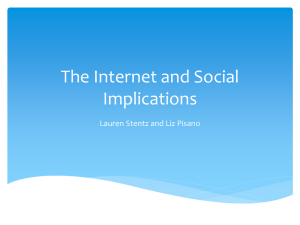
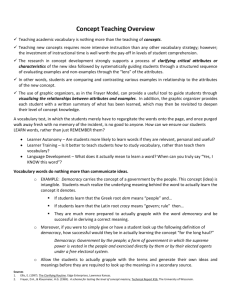
![“The Progress of invention is really a threat [to monarchy]. Whenever](http://s2.studylib.net/store/data/005328855_1-dcf2226918c1b7efad661cb19485529d-300x300.png)

